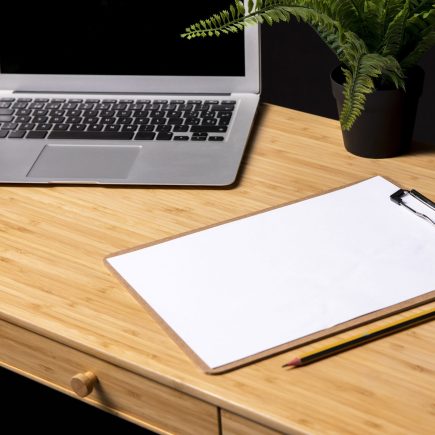Raised garden beds are one of the most practical and efficient solutions for gardeners. Whether you’re looking to create a vibrant vegetable garden, grow colorful flowers, or tend to aromatic herbs, building a raised garden bed offers numerous benefits over traditional in-ground gardening. With raised beds, you can improve soil quality, enhance drainage, minimize the risk of pests, and create a more accessible garden space.
Step 1: Choosing the Right Size for Your Raised Garden Bed

Recommended Sizes:
When selecting the size of your raised garden bed, consider both the available space in your yard and the plants you want to grow. Here are some recommended bed sizes:
- 4×8 feet: This is the most popular size for raised beds, offering plenty of space for a variety of vegetables, herbs, and flowers.
- 2×6 feet: This size is perfect for smaller gardens or if you’re planting a few specific crops, like herbs or salad greens.
- Custom Sizes: If you have a unique space in your garden, such as a corner or along a fence, you can easily customize the size of your raised bed.
Width Considerations:
The width of your raised bed should generally not exceed 4 feet. This is because anything wider makes it difficult to reach the center of the bed without stepping on the soil. Keeping the width within this limit will help you maintain healthy soil structure and access all areas of the bed without compacting the soil.
Step 2: Choosing the Right Materials for Your Raised Bed
The materials you choose for your raised garden bed will impact its durability, appearance, and overall functionality. Let’s explore some of the most popular material options:
1. Wood:

- Cedar and redwood are excellent choices for raised garden beds due to their natural resistance to rot and pests. They also add a rustic, natural look to your garden.
- If you’re looking for an affordable option, pine wood can also work well, though it may not last as long as cedar or redwood.
For those interested in an elevated design, consider the Outsunny 3 Tier Raised Garden Bed. This vertical wooden planter offers three compartments for plants, making it perfect for small gardens or maximizing space. Plus, the sturdy wood construction ensures durability in all weather conditions.
2. Metal:

Metal is a modern and long-lasting option for raised beds. Galvanized steel is the most common choice, as it resists rust and corrosion. If you’re looking for something durable and low-maintenance, the Outsunny Galvanized Raised Garden Bed is an ideal option. It comes in a variety of sizes and is built to last for many years.
3. Concrete Blocks or Bricks:

If you want a more permanent and sturdy structure, consider using concrete blocks or bricks. These materials are long-lasting and can withstand harsh weather conditions. They are also ideal for larger, custom-shaped raised beds.
4. Eco-Friendly Options:

For environmentally-conscious gardeners, consider using reclaimed wood or eco-friendly wood treatments Wood Planter Box with Storage Shelf and Non-Woven Fabric to reduce your carbon footprint. You can also explore the use of recycled materials, such as old tires or plastic containers, as a creative and sustainable way to build raised beds.
Step 3: Tools You’ll Need

To ensure a smooth building process, having the right tools is essential. Here’s a list of basic tools you’ll need:
Basic Tools:
- Saw: For cutting wood to the desired lengths.
- Drill: To drill pilot holes for screws or nails.
- Measuring Tape: To ensure accurate dimensions.
- Screws or Nails: For securing the wood or metal parts together.
- Level: To make sure your bed is even and stable.
For more precise cuts, consider using a framing square or sawhorse. These tools will help you achieve cleaner, more accurate cuts for a professional-looking garden bed.
Step 4: Assembling the Frame
Building the frame for your raised garden bed is the next step in creating a solid foundation for your garden. Here’s how you can assemble the frame:
1. Cutting the Wood:
- Start by measuring the pieces of wood to the desired dimensions for your raised bed. If you’re working with metal, you may only need to bend the edges to form a box.
- Cut the wood pieces for the long sides and the shorter end pieces.
2. Assembling the Frame:

- Use screws or nails to attach the pieces of wood together. For added stability, consider using framing angles or corner posts.
Step 5: Adding Weed and Pest Prevention
Weeds can quickly take over a garden if not managed properly. A raised garden bed can help minimize weed growth, but you can take additional steps to ensure the soil stays clear of unwanted plants.
1. Use Landscape Fabric:
- Place landscape fabric or cardboard at the bottom of the bed to block weed growth. This will prevent weeds from sprouting through the soil.
2. Install Hardware Cloth:
- To keep pests like voles and rabbits out of your raised bed, consider installing hardware cloth around the perimeter. This mesh will prevent small animals from burrowing into the bed.

For added protection, the Outsunny Raised Garden Bed with Storage Shelf offers a sturdy base and a convenient storage area for your gardening tools, ensuring that your plants remain safe from pests while also keeping everything organized.
Step 6: Ensuring Proper Drainage
Proper drainage is crucial for plant health. Without it, excess water can accumulate, leading to root rot. Here’s how to ensure good drainage:
1. Gravel Layer:
- Start by adding a layer of gravel or sand at the bottom of your raised bed. This will help water drain effectively and prevent soil compaction.
2. Well-Draining Soil:
- Use a soil mixture that includes compost, topsoil, and perlite. This will ensure that your bed has the right balance of moisture retention and drainage.
If you prefer a ready-to-go option, the Raised Garden Bed with Trellis features excellent drainage capabilities, with a breathable, non-woven fabric bottom that keeps water levels in check while preventing soil loss.
Step 7: Filling the Raised Bed with Soil

The next step is filling your raised bed with soil. Here’s the best approach:
Best Soil Mixture:
- Compost: Provides nutrients and helps improve soil structure.
- Topsoil: Adds bulk and ensures stability.
- Aeration Additives: Use materials like perlite or vermiculite to improve drainage and aeration.
You can buy bulk soil or bagged soil depending on your needs. If you want to save time and effort, pre-mixed raised bed soil can be a convenient option.
Step 8: Customizing Your Raised Garden Bed
Customizing your raised garden bed allows you to create a unique, functional space that suits your needs.
1. Adding a Trellis:
If you’re growing climbing plants like beans, peas, or tomatoes, consider adding a trellis. They provide both support and a decorative element for your garden.
2. Vertical Gardening:

For small spaces, consider building a multi-tiered raised garden bed. The Outsunny 4-Tier Vertical Raised Garden Planter, Herb and Flowers is perfect for vertical gardening, allowing you to grow more plants in less space while keeping them organized and easy to maintain.
Frequently Asked Questions
1. How do I prevent weeds in my raised garden bed?
To prevent weeds, lay landscape fabric or cardboard at the bottom of the bed. This blocks weed growth without affecting plant roots. You can also install hardware cloth around the edges to stop pests.
2. What’s the best material for raised garden beds?
Cedar and redwood are ideal for their natural rot resistance, but galvanized steel is a low-maintenance option for durability. Both materials ensure longevity and protection from the elements.
3. How do I ensure my raised garden bed drains well?
For good drainage, place a layer of gravel or sand at the bottom of the bed. Mix in well-draining soil with compost, topsoil, and aeration additives like perlite to balance moisture retention.
4. Can I grow vegetables in a raised garden bed?
Yes, raised garden beds are great for growing vegetables. They provide better root growth, improved drainage, and easier access for watering and harvesting.






















